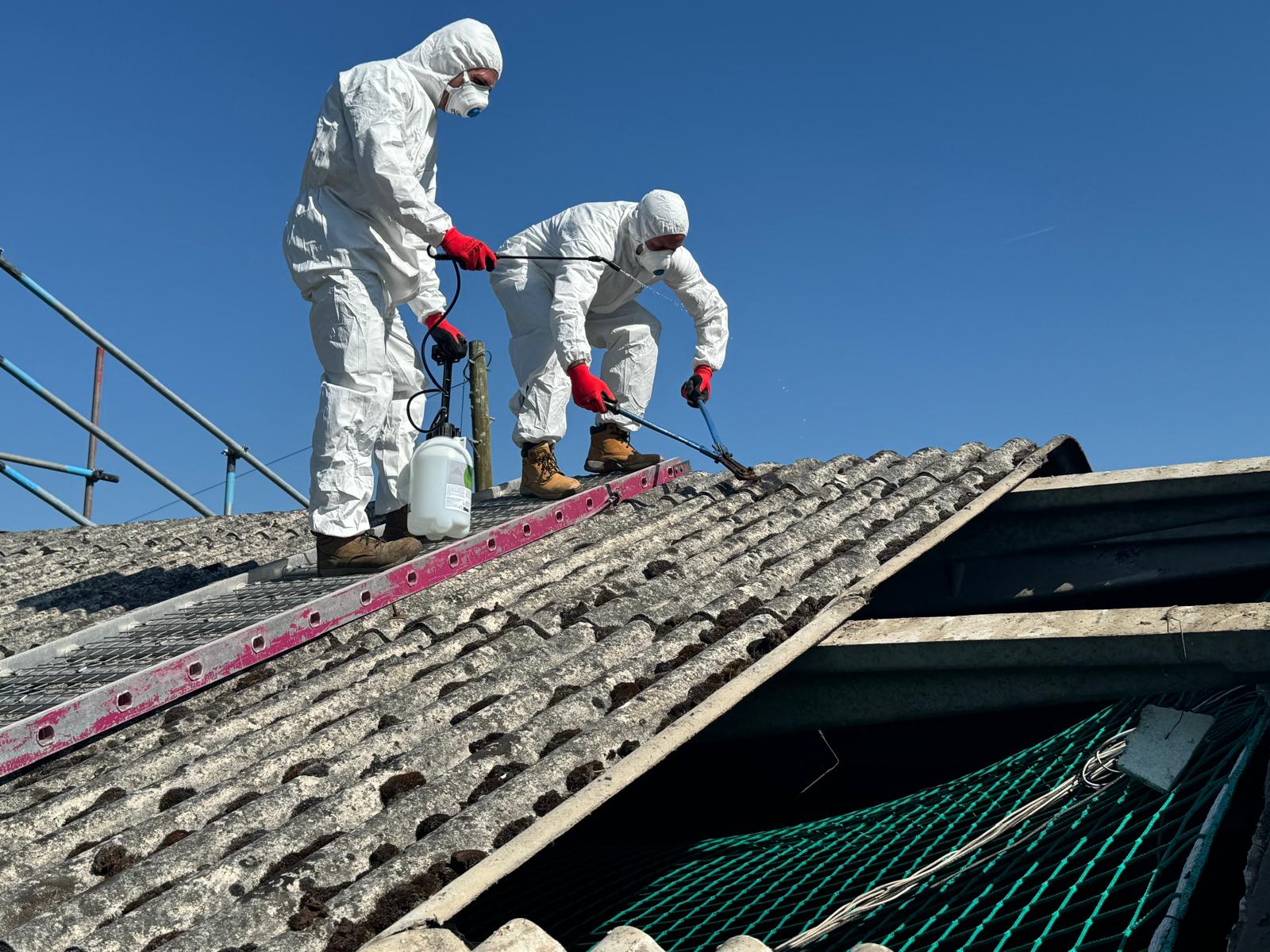Asbestos is a group of naturally occurring fibrous minerals, known for their heat resistance, strength, and durability. However, these same properties also make them dangerous when inhaled or ingested, as they can cause serious health problems. Exposure to asbestos is linked to several diseases, including mesothelioma, lung cancer, and asbestosis.
Removing asbestos is a hazardous task that should only be undertaken by trained professionals.
So, how do we go about removing asbestos safely?
- Prepare your work area. Remove anything that doesn’t need to be there. Cover the ground or other surfaces with polythene that can be disposed of later. Ensure you have enough heavy-duty bags or polythene for wrapping the sheets.
- Make sure you have a safe means of reaching the material to be removed. Start to remove the asbestos methodically. You may need to unscrew any fastenings so make sure you have the right tools available.
- Hand down the pieces you remove and place them carefully on the polythene sheet where they will not get damaged.
- When you are finished, check for any debris. Clear up by hand, using wet wipes or similar disposable cloths, and ensure any small particles and dust are placed on the polythene sheets. Never be tempted to use a vacuum cleaner.
- Wrap the pieces in the polythene or place in a bag if small enough. Do not break them up. Seal with tape and repeat the process so everything is double bagged.
- You will also need to dispose of the polythene used to cover the ground, your overalls and mask. Wipe down your footwear and put the cloth in with the waste. Carry out the same double bagging procedure.
- Contact a licensed asbestos removal firm to arrange for them to take the waste to a site licensed for the disposal of hazardous waste. Compliance with the Special Waste Regulations 1996 is required.
We have just completed the procedure at our Leicestershire project on each roof bay, where we also carried out air monitoring before the works started and afterwards. Air monitoring is essential during asbestos removal to ensure workers are adequately protected and to detect any potential breaches in containment.
